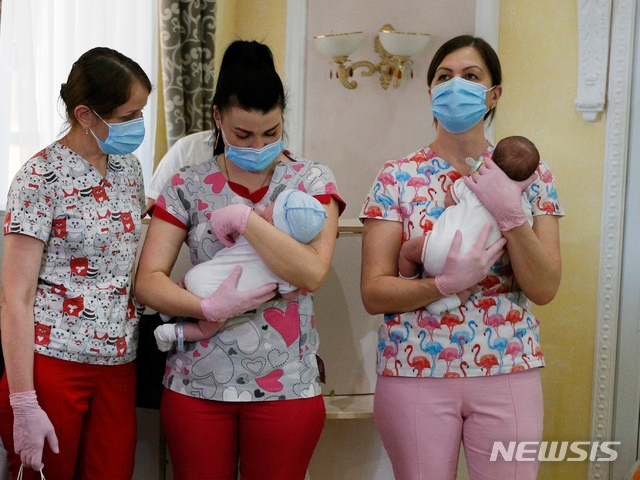- An Opportunity or Exploitation in Desperate Conditions?
The use of surrogacy to have children through a third party has gained attention after Spanish actress Ana Obregon's cover photo in the Spanish magazine ‘Hola’ went viral. The photo shows her leaving a hospital in the United States with a newborn, who was not biologically hers but rather her dead son’s and was born through a surrogate mother. Surrogacy is illegal in Spain, so she had to seek out a candidate in a U.S. state where the practice was legal. The incident sparked various opinions on the practice of surrogacy, despite the growing number of children born through this method.
 |
| ▲ A Pregnant Woman (Photo from Freepik) |
A ‘surrogate mother’ is a woman who carries a pregnancy for another person or couple, with the intention of giving the child to that person or couple once they are born. Surrogacy is often used when a woman cannot carry a pregnancy herself due to medical conditions or in cases where a same-sex couple or single person wishes to have a child. There are two types of surrogacy: traditional and gestational. A traditional surrogate is the biological mother of the child; her egg is combined with the intended father’s or donor’s sperm. This type of surrogacy has been practiced the longest. Before modern technology allowed for the creation of embryos outside the womb, the only way an infertile couple could conceive was via a surrogate. However, today, the surrogate no longer needs to donate her egg and can potentially have no DNA or genetic relation to the child she is carrying. Science now allows a surrogate mother to carry another woman’s fertilized egg with relative ease: she is known as a gestational surrogate or gestational carrier. This is the most popular type of surrogacy and offers the most legal protection for both intended parents and surrogates. The surrogate has no DNA in common with the kid and is not the biological mother. The embryo planted in the surrogate bears no DNA or genetic resemblance to the surrogate. Current laws in South Korea do not extensively cover surrogacy. The law is somewhat ambiguous, but Article 23 of the Bioethics and Safety Act deals, with embryo creation, indirectly references surrogacy. According to the law, 'No person shall provide or use an embryo, oocyte, or spermatozoon for money, an interest in the property, or any other consideration; solicit another person to provide or use an embryo, oocyte, or spermatozoon for such consideration; or act as a broker for providing or using an embryo, oocyte, or spermatozoon.' Therefore, using a surrogate mother's egg is illegal under Article 23 of the Bioethics and Safety Act and may result in a prison sentence of up to three years, according to Article 66 (1) 4 of the law. However, only using a surrogate mother's uterus does not violate the law, regardless of compensation. Nevertheless, in Korea, the surrogacy contract itself could be considered an anti-social illegal act under Article 103 of the Civil Law and is thus voidable. Surrogacy is generally considered an indefinable predicament in Korea.
As the number of surrogate mothers has been rising around the globe, the need to clarify laws surrounding the practice has become more important. There are two perceptions of the practice of surrogacy. One side believes it is the solution to problems related to childbirth, and the other side believes the policy should have ethical limits. People who want to legalize surrogacy see surrogate mothers as a solution to infertility. In the journal, ‘Causes and Diagnosis of Female Infertility’, about 35 percent of cases of sterility are related to diseases of the fallopian tubes and cervix. Advocates believe it is better to get pregnant via surrogate because these diseases are difficult to treat. Additionally, the journal says that possibility of becoming pregnant sharply declines after 30. Statistics Korea indicates that the average age at which Korean women become pregnant is around 32 years old. With the number of pregnancies in older women increasing, some have argued for the legalization of surrogate mothers as a viable option. Surrogate childbirth has already become a successful industry. Market research firm Global Market Insights said the size of the surrogate mother industry was estimated at about 140 million dollars last year and that number is expected to increase. The growth indicates the possibility of this becoming a stable industry and a viable solution for those seeking children where options were previously not available. Conversely, those opposed to surrogacy say surrogate mothers are often treated merely as birthing instruments. They are often exposed to various health risks post-partum. While childbirth is typically viewed as a priceless experience, surrogate mothers are compensated solely for the act of giving birth. This perception may ultimately contribute to gender bias. Actress, Ana Obregón, had her dead son’s baby through a surrogate mother to satisfy her desire to keep her son’s legacy alive. Critics felt this disrespected the surrogate mother by treating her as an instrument. Additionally, there are concerns the surrogate will be stuck with the newborn if the requesting parents change their minds. There are no rules for protecting the rights of the child. Chinese celebrity, Zhèng Shuăng, had her child through surrogacy. After breaking up with her boyfriend, she chose not to raise the baby. Whose baby is this supposed to be? Who should be responsible for raising the child?
 |
| ▲ Nurses in Ukraine, where the surrogate mother industry is developed, are holding babies born through surrogate mothers. (Photo from Newsis) |
Commercial surrogacy remains a contentious issue around the world, with conflicting legal approaches and ethical concerns. In South Korea, China, Japan, and many European countries such as Germany, France, Spain, and Italy, surrogacy is strictly prohibited, and stipulating the buying and selling of sperm or eggs for money is prohibited. On the other hand, some states in the United States, Russia, Ukraine, and India, have sanctioned commercial surrogacy as legal. As of March 8, 2023, the size of the commercial surrogacy industry was estimated at $14 billion, and it is expected to grow to $129 billion by 2032. While the industry continues to expand, numerous ethical issues are arising that need to be addressed. In order to avoid the exploitation of surrogates and ensure the well-being of all parties involved, governments need to develop clear rules regarding the practice. The United Kingdom has taken steps to regulate surrogacy. In 1985, when an infertile American couple signed a surrogate contract with a British woman, the issue of surrogacy emerged on the front page of British society. As social criticism mounted over the surrogate mother contract, the British Parliament introduced a new law to deal with the issue. The 'Act on Human Modification and Occurrence' came into effect in 1990. Under the terms of this legislation, surrogacy advertisements were outlawed, and surrogacy contracts were permitted between relatives or family members only. Furthermore, donated sperm, eggs, and embryos, could only be used under strictly controlled circumstances, and were limited to licensed medical institutions.
It may be difficult to say whether surrogacy will help mankind solve its population shortages or empower a degenerative mindset. For those who cannot have babies for themselves, it is the only way for them to carry forward their genes. However, on the other side of the coin, there are ethical considerations in the use and treatment of surrogate mothers. It is an unprecedented risk. Since this issue strongly reflects the culture and customs of each country, there will inevitably be differences in the restrictions and permission for surrogacy. Nevertheless, what remains unchanged is the need to respect each person's dignity.
김주연, 이진희, 정영훈, 딘푸엉타오 dankookherald@gmail.com






